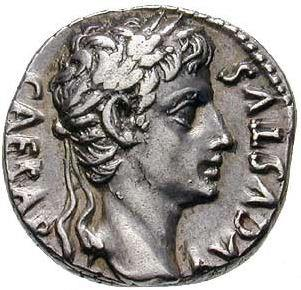Luke 20‒21
The parable of the workers in the vineyard
Luke 20
9 And He began to say to the people this parable: A certain
man planted a vineyard, and let it out to farmers, and went
abroad for a considerable time.
10 And at the time, he sent a servant to the farmers, that they
should give him some of the fruit of the vineyard; but the
farmers beat him, and sent him away empty.
11 And again he sent2 another servant; and they beat him
also, and treating him shamefully, they sent him away empty.
12 And he added to send a third; and they also wounded
him and cast him out.
13 And the lord of the vineyard said, What shall I do? I will
send my beloved son; likely3 when they see him, they will
have respect for him.
14 But when the farmers saw him, they reasoned to
themselves, saying, This is the heir; come, let us kill him, that
the inheritance may become ours.
15 And they cast him out of the vineyard and killed him.
What therefore shall the lord of the vineyard do to them?
16 He shall come, and shall destroy these farmers, and shall
give the vineyard to others. And when they heard, they said,
Let it not be so.
17 And He looked at them and said, What is this then that is
written, The stone which the builders rejected, the same has
become the head of the corner?4
18 Everyone who falls upon that stone shall be broken; but
on whomever it shall fall, it will grind him to powder.
19 And the chief priests and scribes sought to put their
hands on Him in that same hour; and they feared the people,
for they knew that He had spoken this parable towards
them.
HH 534. The way that leads to heaven and the way that leads to hell were once represented to me. There was a broad way tending towards the left or the north, and many spirits were seen going in it; but at a distance a large stone was seen where the broad way came to an end. From that stone two ways branched off, one to the left and one in the opposite direction to the right. The way that went to the left was narrow or confined, leading through the west to the south, and thus into the light of heaven; the way that went to the right was broad and spacious, leading obliquely downwards towards hell. All at first seemed to be going the same way until they came to the large stone at the head of the two ways. When they reached that point they divided. The good turned to the left and entered the confined way that led to heaven; while the evil, not seeing the stone at the fork of the ways, fell on it and were hurt; and when they rose up they ran on in the broad way to the right which went towards hell.
[2] What all this meant was afterwards explained to me. The first way that was broad, in which many, both good and evil, went together and talked with each other as friends, because there was no visible difference between them, represented those who externally live alike honestly and justly, and between whom seemingly there is no difference. The stone at the head of the two ways or at the corner, on which the evil fell and from which they ran into the way leading to hell, represented the Divine truth, which is rejected by those who look towards hell; and in the highest sense this stone signified the Lord’s Divine Human. But those who acknowledged the Divine truth and also the Divine of the Lord went by the way that led to heaven.
By this again it was shown that in externals the evil lead the same kind of life as the good, or go the same way, that is, one as readily as the other. And yet those who from the heart acknowledge the Divine, especially those within the church who acknowledge the Divine of the Lord, are led to heaven; while those who do not are led to hell.
[3] ...The stone seen at the corner where the broad and common way ended, and from which two ways were seen to lead in opposite directions, illustrated what is signified by the words of the Lord... in Luke.... “Stone” signifies Divine truth, and “the stone of Israel” the Lord in respect to His Divine Human; the “builders” mean those who are of the church; “the head of the corner” is where the two ways are; “to fall” and “to be broken” is to deny and perish.
2 Literally, “added to send,” which is like Hebrew; likewise in verse 12
3 The Greek is ισως, meaning “equal” or “alike.”
4 Psalm 118:22
Questions and Comments
- Can you fill in the blanks?
- The vineyard signifies the _______________.
- The farmers signify ____________________.
- The fruits of the vineyard signify ______________.
- The servants who were sent to ask for the fruits, and who were abused by the farmers, signify ___________.
- The beloved son signifies ______________.
- In the parable, the first evil committed was refusal to give any of the fruits of the vineyard. The second was to abuse the servants sent by the lord of the vineyard. Finally they killed his son. What warnings can we draw from this downward track?
- Is it hard to believe in the Lord and let Him be the cornerstone of the church? If not, why do churches always eventually follow the downward track? If so, why is it hard to believe in Him?
| previous |  |
next |
|---|


